Adventurous Kyrgyzstan: A Blend of Nature, History and Culture
Set in the heart of Central Asia, where rugged mountains scatter amidst picturesque plains, Kyrgystan unfurls a captivating tapestry of sprawling landscapes, age-old traditions, and rich culture. The country, predominantly an unexplored pearl in the global tourism scene, celebrates all the elements of an ideal traveler's paradise. The strategic position at the crossroads of ancient trade routes, diverse ethnic communities, and distinctive cuisine set the country apart, bestowing upon it a unique charm and vivid identity.
An overview of Kyrgystan reveals a spectacular fusion of nature and nurture. Unraveling from its core, the capital city Bishkek into the remote outskirts, the country is adorned with the sempiternal beauty of snow-clad mountains, verdant meadows, serene Alpine lakes, and resourceful hot springs. This enchanting symphony of nature is reflected in its people who show a deep reverence for their natural abundance and environment. The Kyrgyz people, known for their warmth and hospitality, extend an inviting aura that encapsulates Kyrgyzstan's essence, making every traveller's experience remarkably homely and personal.

Kyrgystan's geography illustrates a vibrant mosaic of glacial valleys, high-altitude lakes, and majestic peaks. The country's unmatched geographic diversity springs from the Tian Shan range vaulting across its expanse and the richness of its flora and fauna. The jewel of Kyrgystan, Lake Issyk-Kul, possesses curative powers and is a treasured spectacle of natural beauty. Protected reserves like the Ala-Archa National Park showcase the country's commitment to preserving its ecological heritage.
The traditions and history of Kyrgystan resonate in every corner of this scenic country. The remnants of Silk Road caravanserais testify to its historical significance. A multitude of influences shaping its historical trajectory, from Mongol invasions to the Soviet reign, fuels its culturally diverse fabric. This diversity reflects markedly in the country's architecture, art, and even everyday life anecdotes capturing the complex interplay of yesteryears with the rhythm of the present.
The untapped tourism potential of Kyrgystan is undeniable. With such a rich heritage, natural splendor, and ever-friendly locals, it is a destination begging for deeper exploration. Yet, despite these irresistible draws, this stunning canvass of a country remains relatively unknown to most international travellers. This obscurity often results from a lack of efficient travel planning resources and guides that can offer a comprehensive understanding of this elusive gem.
Unlocking Kyrgystan's tourism potential, this guide aims to shed light on the country's various aspects, from its historic significance and architectural grandeur to popular holiday resorts and local cuisine, to help you navigate and witness the untold beauty and experiences Kyrgystan offers. For those who aspire to wander off the beaten path, uncover the local life's rhythm, and immerse in nature's unadulterated beauty and tranquillity, Kyrgystan calls for your exploration. This journey promises to be a confluence of enlightening insights and awe-inspiring revelations that will forever have you captivated by the Land of the Kyrgus.
The Historic Significance of Kyrgystan
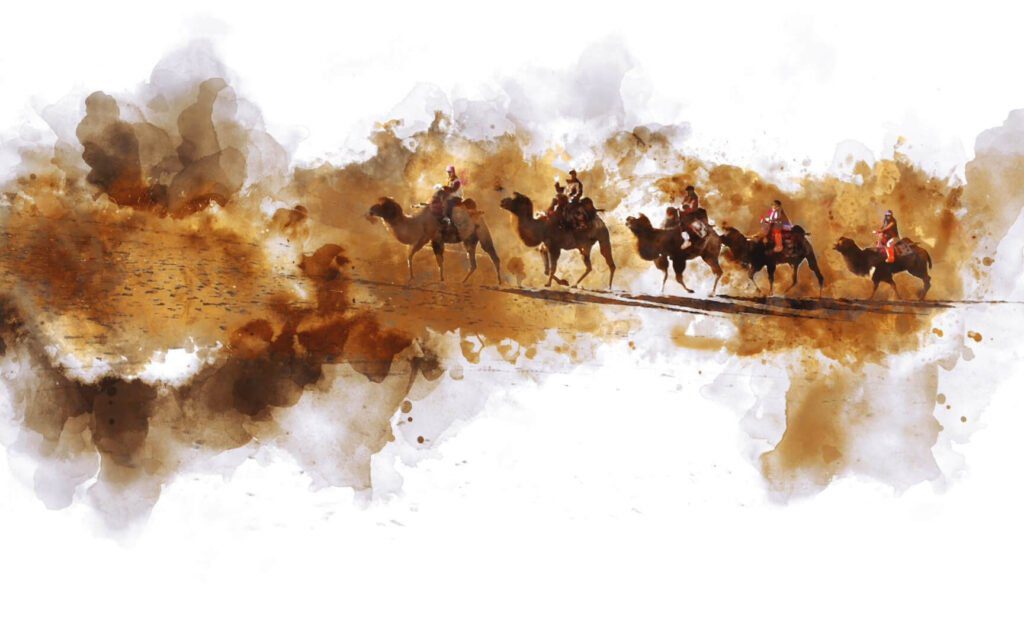
The History of the Kyrgus People
From time immemorial, the Kyrgus people, original inhabitants of Kyrgystan, have led a nomadic lifestyle, moving from one pasture to another, depending on the season. This lifestyle is deeply rooted in their culture, customs, and practices, which extend to their arts, music, and even attire.
Kyrgystan's Position on the Silk Road
The worldwide renown historical crossroad, the Silk Road, significantly lends to the multi-layered past of Kyrgystan. Once a bustling trade route connecting China with the Middle East and Europe, the Silk Road augmented the cultural and economic exchange between civilizations over centuries.
In Kyrgystan, cities like Osh and Jalal-Abad flourished as important commercial hubs. They offered traders a place to rest, replenish their supplies, and also engage in local commerce, enabling the socio-economic growth of these cities. Remnants of these historic urban centers still amaze visitors with their rich history and well-preserved monuments.
Understanding the Invasions from Different Empires
Over centuries, Kyrgystan has weathered numerous invasions and occupations leading to a confluence of diverse cultures. The Mongolian invasion during the 13th century had a significant impact on the region. Genghis Khan's empire left a lasting imprint, shaping the cultural and ethnic fabric of Kyrgystan.
The subsequent influence of the Qing Dynasty and the Russian Empire further added to the complex historical narrative of the country. Soviet rule, in particular, led to a colossal socio-economic transformation, bringing rapid industrialization and a shift from nomadic to settled life.
Kyrgystan's Journey to Independence
An era which marked the changing trajectory of Kyrgystan’s socio-political landscape was its journey towards independence. Kyrgystan gained independence from the Soviet Union in 1991, marking the advent of a new chapter in its history. Today, Kyrgystan retains its unique culture while embracing democratic values and principles.
The essences of history, coupled with the indomitable spirit of the Kyrgus people and the distinctive blend of cultures, significantly contribute to Kyrgystan's charming allure. It's a living testament to a past that survived and thrived amid the ebb and flow of time, which continues to captivate every traveler. Through every rugged terrain and within each bustling bazaar, the echoes of an age-old history and the resilience of its people continue to enthral visitors worldwide.
The Capital City of Bishkek
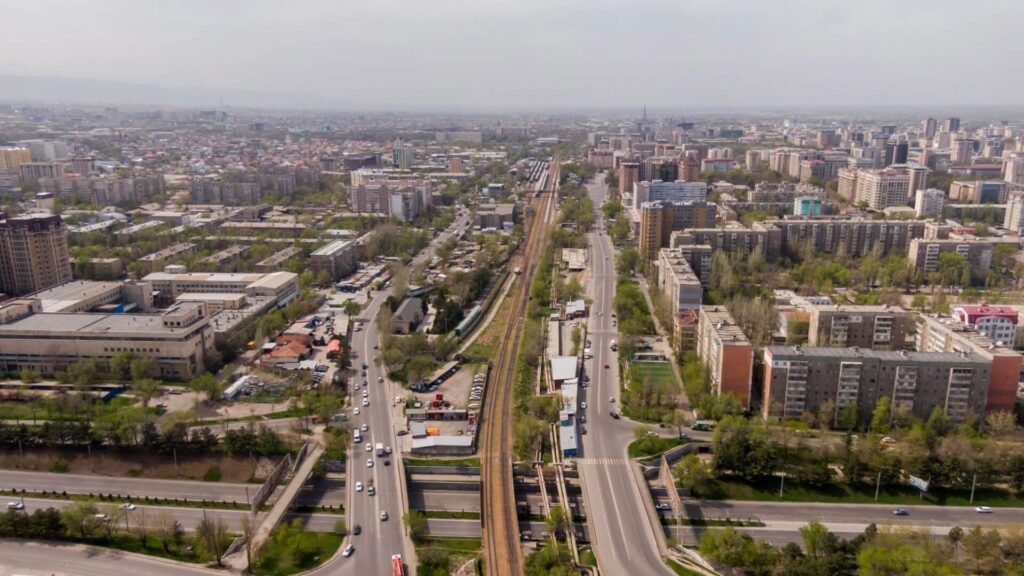
A Tour of the Modern Metropolis
Bishkek, the bustling capital of Kyrgystan, is a metropolis that captures the country's essence. Its vibrant city streets, modern infrastructures, fascinating museums, and leafy parks make it distinctive. The city architecture blends Soviet-era block buildings with elements of the Kyrgus' traditional nomadic culture, making Bishkek a city like no other.
How Bishkek Has Changed Over the Years
Over the years, Bishkek has seen significant transformation. From a small caravan rest stop in the 19th century to becoming the political, economic, and cultural center of Kyrgystan, the city's development has been remarkable. Today, it stands as an exemplar of Kyrgystan's progress, embracing the future while preserving its historic roots.
Highlighting Interesting Places around the City
Bishkek brims with places that are a must-visit. Ala-Too Square, the heart of the city, hosts various public events and celebrations. The majestic State History Museum overlooks the square, housing a wide range of exhibits from Kyrgystan's history. The Osh Bazaar is a labyrinth of stalls selling local products, from fresh produce to traditional Kyrgus hats.
The Role of Religion in the City
Although Kyrgystan is a secular country, Islam, practised by most Kyrgus people, plays an essential role in people's lives. In Bishkek, this religious influence is evident in the city's myriad of mosques, the most striking of which is the Great Central Mosque, a testament to stunning Islamic architecture. However, Bishkek's religious landscape is diverse, showcasing not just mosques but also Russian Orthodox churches and other places of worship, symbolizing the city's religious tolerance and diversity.

Bishkek, in its own right, is a microcosm of Kyrgystan. It's where tradition meets modernity, creating a harmonious blend that comes together to show off the unique charm of Kyrgystan. Whether you're wandering through the thriving bazaars or appreciating the city's diverse architecture, Bishkek provides an alluring first taste of the wonders that the rest of the country has in store.
Exploring Kyrgystan's Lush Green Spaces
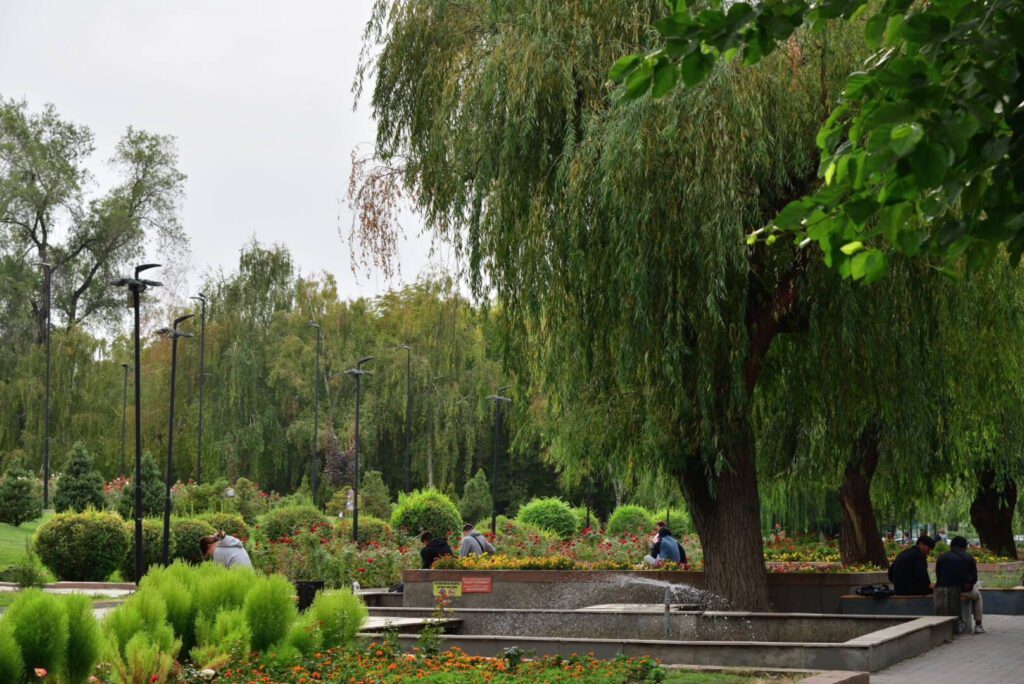
A Walk Through the Parks of Bishkek
Kyrgystan's capital, Bishkek, cradles a multitude of lush green spaces, offering visitors a refreshing retreat amidst the city's urban growth. Panfilov Park, named after Ivan Panfilov, a prominent World War II hero, is known for its shady walkways, peaceful sitting areas and an array of ornamental sculptures. The famous Victory Monument is also situated within this park, serving as a symbol of the nation's strength.
Another must-visit green space is the Oak Park, a beloved place for locals to escape the city's hustle and bustle and breathe in the fresh air. This park is home to an open-air sculpture museum, featuring beautiful works of art, providing a unique cultural perspective amidst a natural backdrop.
Comparing Soviet Architecture and the City's Modernity
In Bishkek, buildings tell their own stories, contrasting the city's Soviet past with its modern progression. Soviet-era edifices with their sturdy constructs and minimalist designs stand alongside modern glass towers, epitomizing the city's evolution.
/
Monuments such as the State History Museum and Philharmonic Hall bear the Soviet architectural influence, showcasing grandeur and simplicity simultaneously. In contrast, recent developments feature sleek office buildings, shopping centers, and high-rise apartments portraying the city's commitment to modernization.
Kyrgystan's Architecture and Seismic Considerations
Kyrgystan lies in a seismically active zone, posing challenges for architectural designs. Many of the country's structures, particularly those built during the Soviet era, were constructed with these considerations in mind to withstand potential earthquakes.
Even today, modern architectural designs incorporate seismic-resilient features, ensuring safety without compromising aesthetic appeal. This unique aspect, though often overlooked, forms a significant part of Kyrgystan's architectural narrative.
The exploration goes beyond the urban spaces of Bishkek as Kyrgystan is a land of spectacular natural beauty. Kyrgystan's lush green spaces serve not only as recreational spots but also as ecological lungs of the city. Whether it's the serene calm of the parks or the visual aesthetic of varied architectural styles, the country's green spaces offer a unique blend of tranquillity and vibrancy that is captivating.
The Local Cuisine
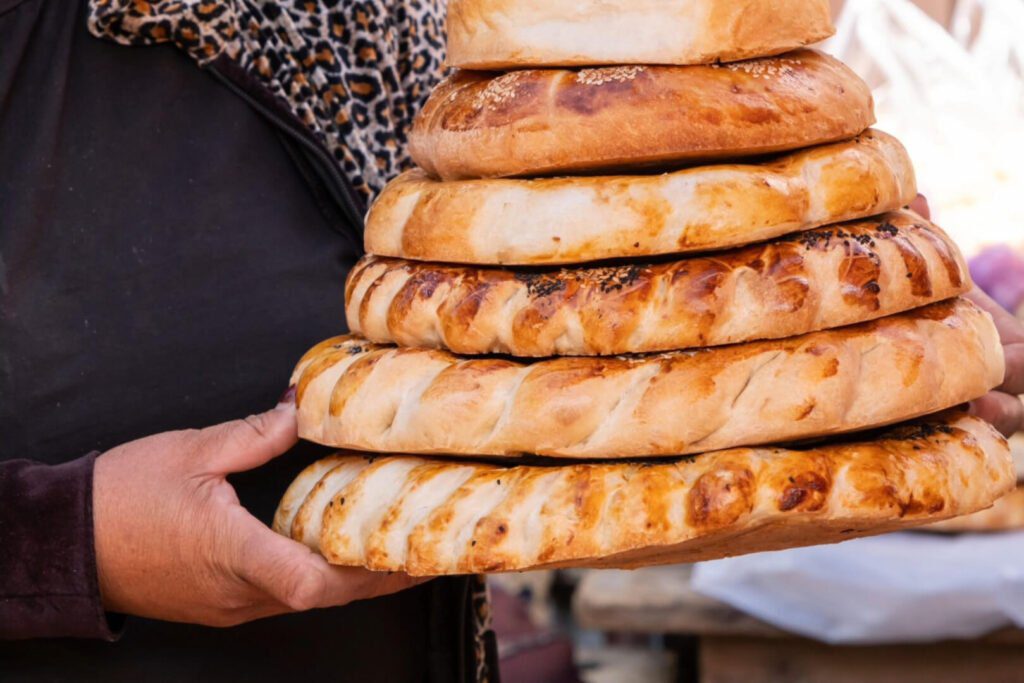
The Importance of Meat in Kyrgystan's Cuisine
In the culinary landscape of Kyrgystan, meat is more than just a component; it channels a significant part of the national gastronomy. Lamb, beef, and horse meat play a starring role in many local dishes. Beshbarmak, regarded as the national dish, is a flavorful blend of boiled meat served over pasta. Another notable dish is Shashlik, skewered and grilled cubes of meat, enjoyed immensely during gatherings and celebrations.
Highlighting Dishes of Note and Where to Try Them
Alongside the meat-heavy dishes, Kyrgystan's cuisine also offers diversity. Paloo, the Kyrgus rendition of pilaf, is a delectable dish made with rice, cooked with an assortment of vegetables, and often served with chunks of meat. Another crowd-pleaser is manty, delicious steamed dumplings filled with meat or vegetables.
You can find authentic local dishes at spots like Navat, Arzu, and Dastorkon, some of the most popular establishments in Bishkek. For street food immersion, the lively Osh Bazaar offers an array of local food stalls to tuck into Kyrgystan's culinary delights.
A Look at Modern Shopping and Traditional Bazaars
Kyrgystan's shopping scene is a captivating mix where the traditional intersects with the modern. On the one hand, Bishkek houses numerous modern supermarkets and shopping malls. On the other, the city also hosts vibrant bazaars, including the bustling Osh Bazaar.
These traditional markets are hotspots for local produce, spices, fresh dairy products, and a plethora of other items. The exchange between buyers and sellers, coupled with the vivid sights, scents, and sounds, make these bazaars a captivating cultural experience and an integral part of local life.
From succulent meat dishes to vibrant markets, Kyrgystan's enriching culinary journey is sure to leave your palate mesmerized with its distinct flavors and your heart filled with treasured experiences. A trip to this mesmerizing country would be incomplete without delving into its food culture and navigating the bustling bazaars that bring cities like Bishkek to life.
Delving into the Ancient Sites
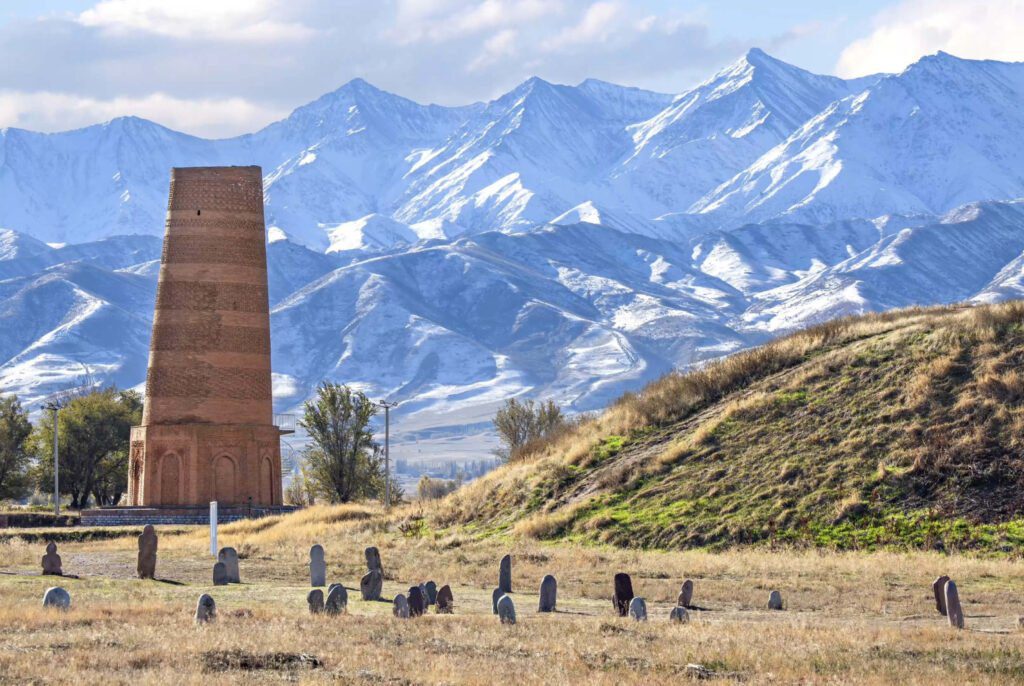
A Visit to Burana Tower and the Ancient City of Balasagun
The historical Burana Tower, nestled in the ruins of the ancient city of Balasagun, is a remnant of Kyrgystan's rich history. Once standing at an impressive height of 45 meters, the Burana Tower is a minaret from the 11th century, now significantly reduced due to natural calamities. Despite the loss, the towering monument still retains a majestic allure, offering a panoramic view of the surrounding Chuy Valley from its peak.
Adjacent to the tower, you can find a field of balbals – ancient grave markers adorned with fascinating carvings that provide crucial insights into Turkic rituals and beliefs.
Exploring the Ala Archa National Park
Moving away from the historical relics, the Ala Archa National Park offers a change in scene with its breathtaking natural beauty. The park, a short drive away from Bishkek, spans over 200 square kilometers and is home to over 20 small and large glacial lakes, along with a myriad of plant and animal species.
The park holds a great appeal for nature lovers and adventurers alike. Whether you are up for a leisurely stroll to admire the pristine landscapes or inclined towards vigorous hiking up to the towering peaks, the Ala Archa National Park has something for everyone.
From historical structures that echo the past to natural landscapes that highlight the country's geographical diversity, Kyrgystan's ancient sites and natural wonders provide a fulfilling journey to any travelers. A visit to these places not only offers a visual treat but also an understanding of the country’s rich cultural history and ecological wealth.
A Culinary Experience
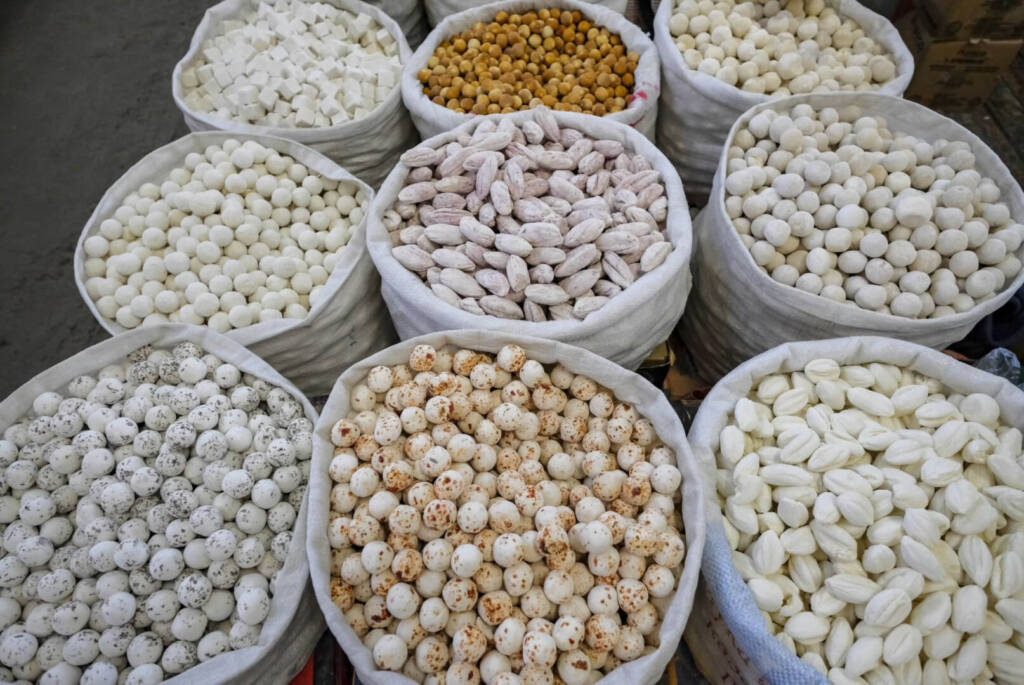
Visiting a Traditional Kyrgystan Restaurant
Visiting a traditional Kyrgystan restaurant can be an experience like no other. Engaging your senses with myriad tastes, smells, and sounds, these restaurants serve as a window into understanding Kyrgystan's rich culinary heritage. "Faiza", a renowned restaurant located in Bishkek, offers an authentic experience that showcases the country's traditional cuisine. Menus here are laden with meaty stews, hearty broths, and tantalizing pastries — all emblematic of Kyrgyztan's gastronomical panorama.
The Role of Cheese in the Local Cuisine
The culinary tapestry of Kyrgystan isn't solely about meat dishes. Cheese holds a coveted place too. Kurut, a variety of dried cheese balls, is a popular snack often accompanied with tea or eaten on its own. Similarly, Beshbarmak, the national dish, occasionally features thin slices of local cheese, giving it a distinctive twist.
For a more comprehensive cheese trial, make sure to take a trip to any of the vibrant local markets. Here, you will find an array of handmade cheese varieties ranging from creamy and smooth to sharp and tangy. Exploring these stalls not only offers a peek into the diversity of Kyrgystan's cheese making traditions but also provides a chance to savor them fresh.
Kyrgystan's culinary heritage is diverse and distinct, punctuated with robust flavors and age-old cooking techniques. By visiting a traditional restaurant and exploring the local markets, you can witness and participate in this vibrant gastronomical narrative, one delicious taste at a time.
Exploring Lake Issyk-Kul
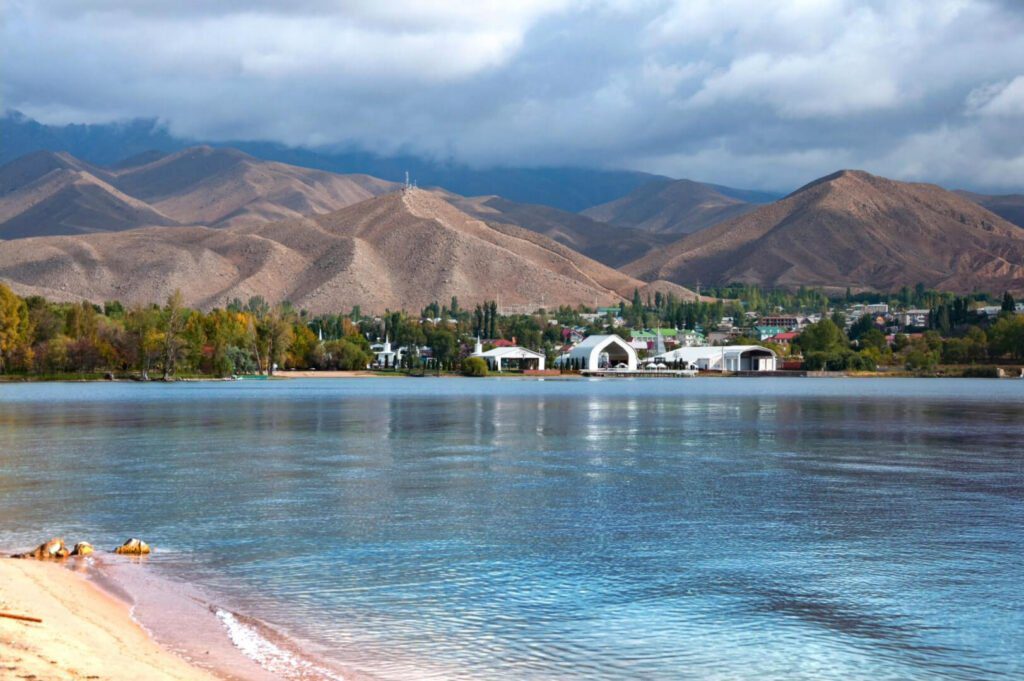
Introduction to Lake Issyk-Kul
Lake Issyk-Kul, dubbed the "Pearl of Central Asia," gleams as one of Kyrgyzstan's standout attractions. This endorheic saltwater lake, enveloped by the snow-clad Tian Shan mountains, is the second-largest high-altitude lake in the world. Despite its name, which translates to "hot lake," its crisp, blue waters can be rather chilly, maintaining lower temperatures even in the height of summer.
Breakdown of Lake Issyk-Kul’s Main Attractions and Rich Offerings
Perched over a thousand meters above sea level, Lake Issyk-Kul is more than just a pretty sight. It serves as a marquee for an assortment of exciting activities and attractions. The lake's northern shore, teeming with tourist resorts and sandy beaches, is a hotspot for relaxation and water sports. Jet-skiing, yachting, and paddling offer adrenaline-infused ways to explore the lake's spanning waters.
The southern shore offers a more tranquil and untouched environment. Here, you can embark on hikes leading to rugged gorges, waterfalls, and the shimmering Barskoon Glacier. Besides, the sacred springs at Jeti-Oguz, revered for their healing properties, provide an intriguing detour.
Around the lake, several cultural and historical sites like the petroglyphs at Cholpon-Ata and the minaret at Burana Tower add layers of depth to the scenic beauty.
Encapsulating a diverse range of attractions — from exciting water sports and scenic hiking trails to important historical landmarks — a trip to Lake Issyk-Kul unfurls a variety of memorable experiences. It's a place that combines the contemplative lure of untouched nature with the thrill of adventure, crafting a compelling narrative of Kyrgyzstan's charms.
A Look at the Resort Town of Cholpon ATA
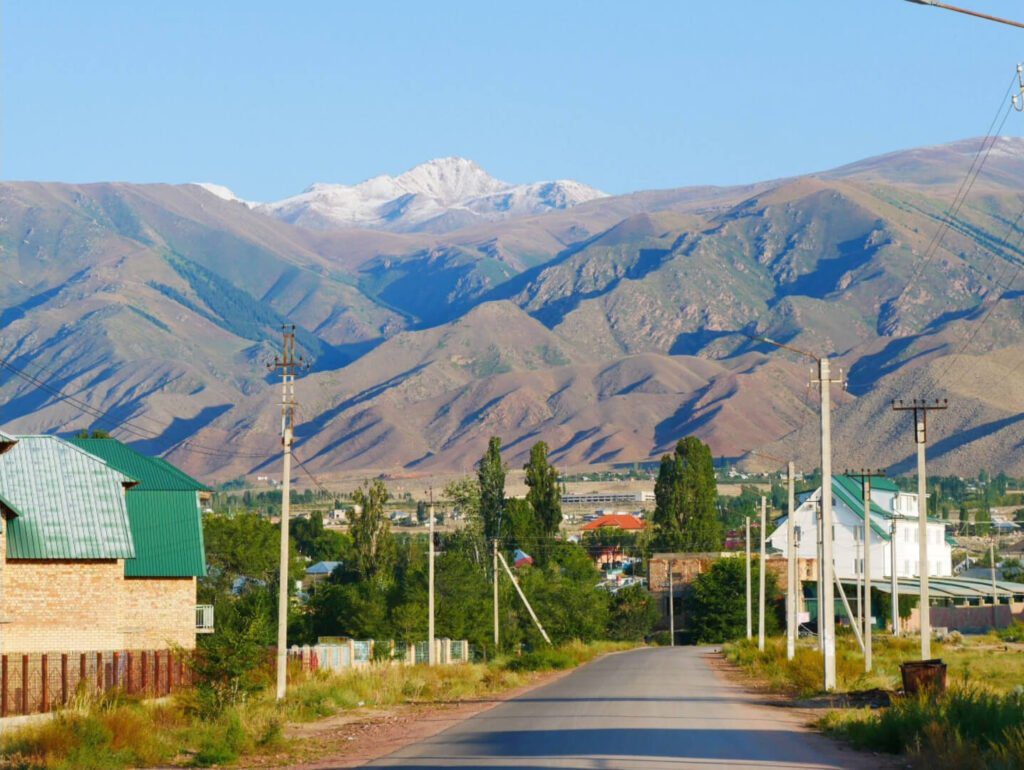
History of Cholpon ATA as a Vacation Spot
A tranquil and picturesque destination in the lap of Kyrgyzstan's rugged natural beauty, Cholpon ATA hardly needs an introduction. This bubbling resort town, nestled near the northern edges of the majestic Lake Issyk-Kul, has a rich history that stretches back centuries. Formerly revered as a sacred retreat for indigenous tribes seeking solace in its warm, therapeutic waters, Cholpon ATA has evolved over centuries into a thriving tourist hotspot.
Understanding the Boom in Bed and Breakfast Rentals
Cholpon ATA's journey to becoming a vacation spot is a testament to its timeless allure. With the rise of sustainable and experiential travel trends, Cholpon ATA has seen a striking boom in bed and breakfast rentals. These locally-run accommodations offer tourists a chance to immerse themselves in authentic Kyrgyz culture, savor traditional cuisine, and form meaningful connections with the locals.
Adorned with ethno-style furnishings and offering unrivaled views of Lake Issyk-Kul's azure expanse, these rentals are gaining popularity among travelers seeking a unique, personalized experience. The bed and breakfast culture not only uplifts local entrepreneurship but also contributes significantly to preserving Cholpon ATA's cultural heritage.
Steeped in history and endowed with an inviting local culture, Cholpon ATA deftly combines leisure and learning. Whether you're relishing the cosy ambiance of a traditional bed and breakfast or soaking up the therapeutic serenity of its natural springs, every moment in Cholpon ATA is bound to be a remarkable experience.
Exploring the Eastern Tip of the Lake
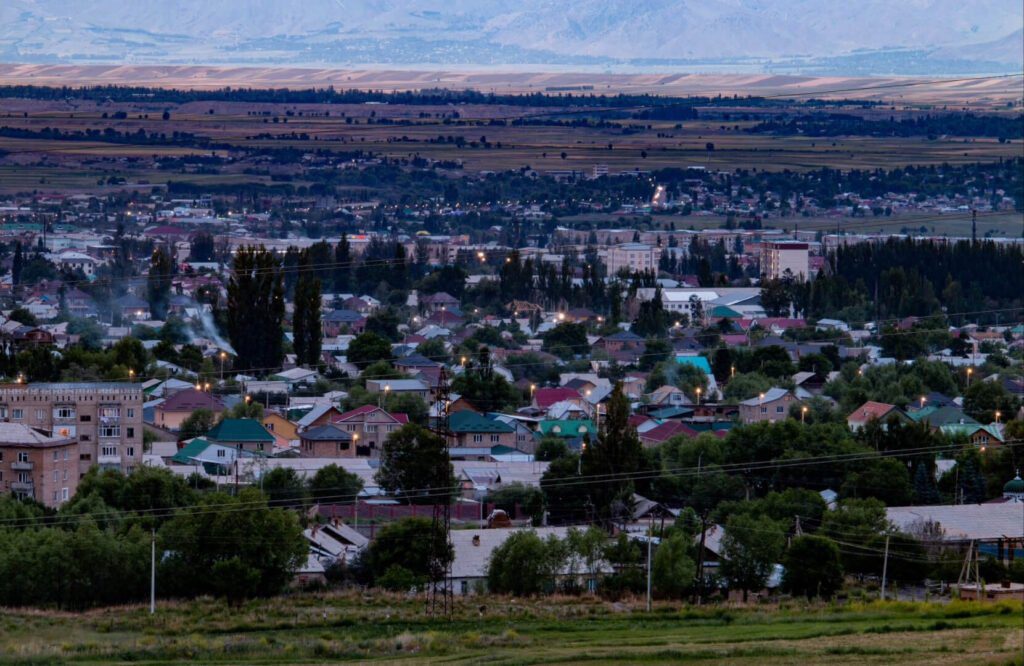
Introduction to Karakol City
Karakol, set against the backdrop of the towering Tian Shan mountain range, graces the eastern tip of Lake Issyk-Kul. This vibrant city, colored by the multi-ethnic tapestry of Turkic, Mongolic, and Slavic influences, has an intriguing history dating back to the end of the 19th century. Over the years, Karakol has emerged as an important base for trekking and mountaineering expeditions in Kyrgyzstan, besides being known for its unique cultural melange.
The Influence of the Dungan Community
Underpinning Karakol's multicultural charm is the significant presence of the Dungan community. The Dungans, Chinese Muslim immigrants, have been residing in Karakol since the 1880s. Their migration and subsequent settlement in the city have left indelible marks on its cultural, architectural, and culinary landscape. Their rich traditions have weaved themselves into Karakol's social fabric, adding to its allure.
Highlighting the Dungan Mosque and its Unique Construction
A testament to the Dungan influence is the visually stunning Dungan Mosque. Unlike typical Islamic places of worship, this mosque, built in 1910, sports an architectural style that fuses Chinese and Buddhist elements. Interestingly, the entire wooden structure, vibrantly painted and ornately carved, stands without a single nail being used. The mosque is a living chronicle of the city's historical past and a must-visit landmark for any traveler.
To explore Karakol is to delve into an intriguing blend of history, culture, and natural beauty. Whether immersing in its multicultural ambiance, understanding the influence of the Dungan community, or marveling at the craftsmanship of the unique Dungan Mosque, every moment in Karakol enriches your Kyrgyzstan experience manifold.
The Seven Bulls Rock and Other Locations
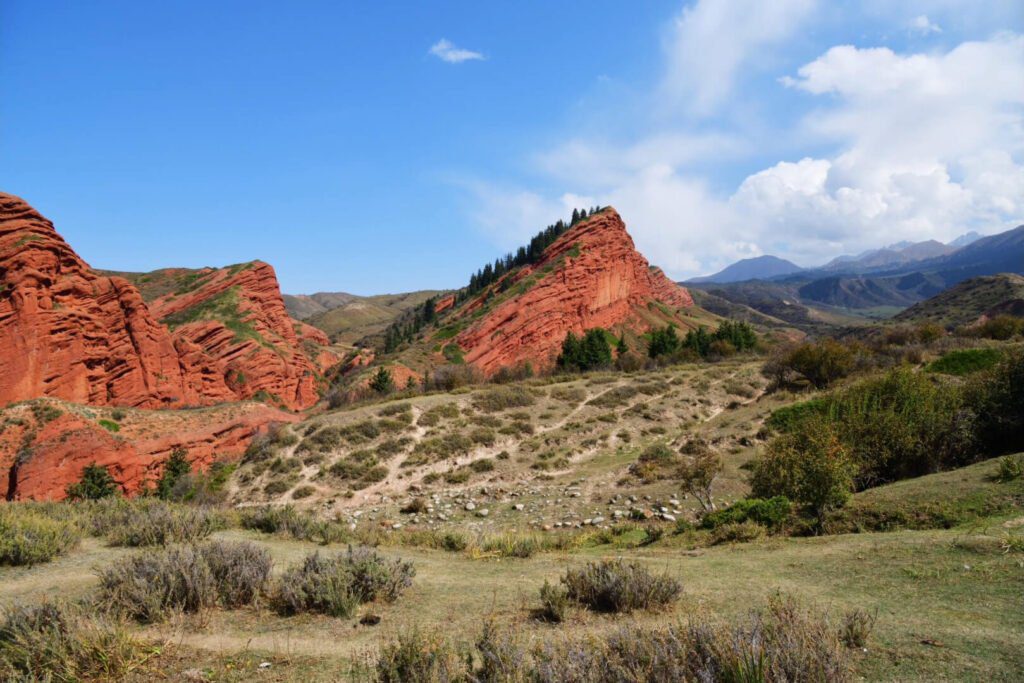
Introduction to the Seven Bulls Rock
Perched in the beautiful Jeti-Ögüz district, the striking Seven Bulls Rock is an iconic natural landmark in Kyrgyzstan. Also known as Jeti-Ögüz Rocks, this unexpectedly artistic manifestation of geological processes captivates with its grandeur and colors. The seven massive, red-colored sandstone formations reminiscent of bulls standing side by side lend the site its popular name.
Hiking Potentials in These Areas
Surrounding the Seven Bulls Rock are rustic landscapes that are a haven for adventurers and nature enthusiasts. The area offers a variety of hiking routes, ranging from casual strolls to challenging ascents. The walk to the Broken Heart Rock, located nearby, is an easy and scenic trail that offers panoramic views of the Seven Bulls Rock and the encompassing valley.
For a more challenging exploit, intrepid souls can embark on a multiple-day trek into the nearby Terskey Ala-Too Range. Here, the blend of snow-capped peaks, sparkling rivers, and verdant meadows makes for an exhilarating experience.
A visit to the Seven Bulls Rock quickly morphs from a sightseeing trip into an adventure overflowing with possibilities. With its distinctive natural structures and breathtaking hiking trails, this Kyrgyz treasure gives you a world of untamed beauty to explore in a day or stay immersed for weeks.
The Rise of the Tourism Infrastructure
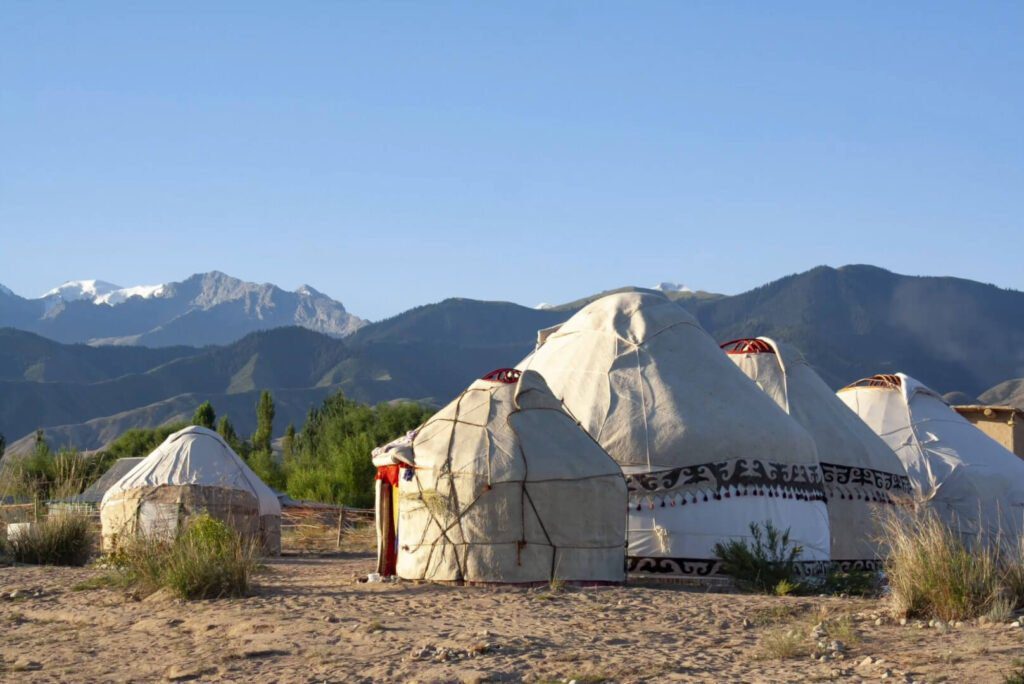
An Examination of the Growing Infrastructure
Kyrgyzstan, with its immense natural beauty and rich cultural heritage, holds a promise for tourism. While still undeveloped in some parts, this landlocked country in Central Asia is experiencing an upswing in the growth of its tourism infrastructure. This improved influx capacity is making it easier for travelers worldwide to enjoy its untamed landscapes, historic sites, and unique experiences.
Key enhancements are being observed in the accommodation sector, with an increasing number of hotels, guesthouses, and camping sites dotted around popular tourist points. Transportation links have also seen progression, including enhanced road infrastructures and better connectivity due to extended domestic and international flight routes. Furthermore, technological advances, like mobile connections and internet hotspots, cater to the modern traveler.
Personal Encounter with Local Entrepreneurs
The development is not merely limited to architectural or technological facets – Kyrgyzstan is experiencing a cultural type of development via local engagement. Entrepreneurs, with their relentless spirit and innovative thinking, are increasingly contributing to Kyrgyzstan's tourism landscape.
These individuals are creating authentic and sustainable travel experiences. They provide homestays that offer a peek into Kyrgyz life or facilitate encounters with nomadic communities residing in the highlands. Some facilitate treks to unexplored territories, while others organize culinary tours centered around the traditional Kyrgyz cuisine.
The growth of the tourism infrastructure is, thus, breathing new life into Kyrgyzstan. Through constant improvements and local entrepreneurship, the country is gradually turning more accessible to global travelers, while also preserving its unique identity and contributing to local economies.
The Southern Shore of the Lake
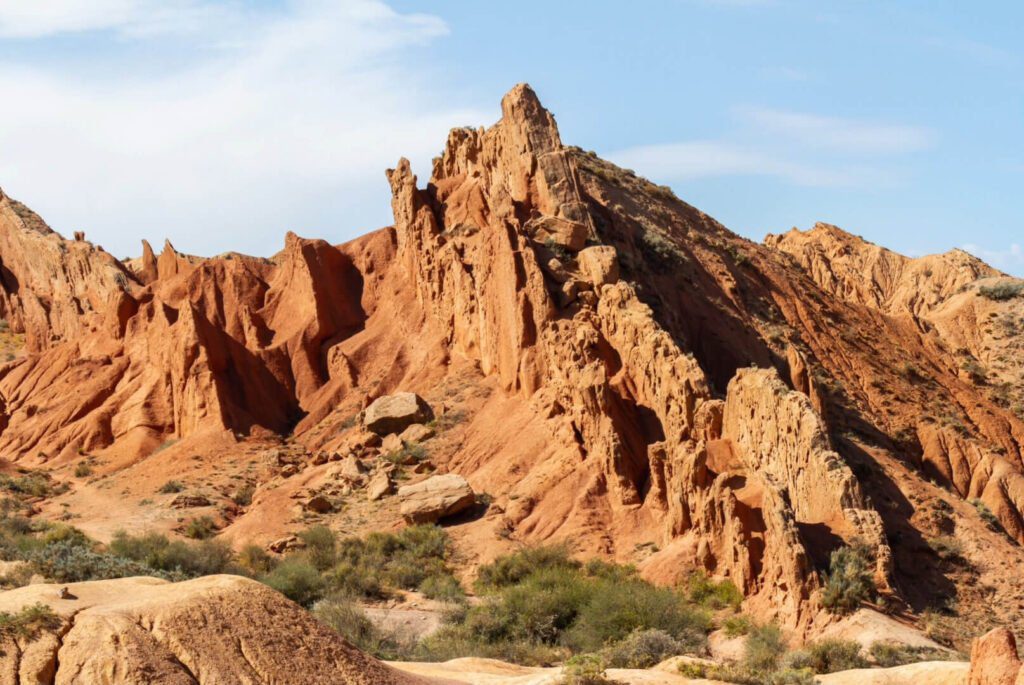
Immersing in Different Kyrgyzstan Folklore
Kyrgyzstan’s southern shore of Lake Issyk-Kul is a treasure trove of story and folklore. Origin tales, fables of local personalities, and mythological accounts shape the identity of these regions. Glass-clear water of the lake coupled with the stunning backdrop of snow-capped peaks have lent themselves to numerous lores passed down through generations.
Among the many narratives, the story of the underwater city remains a popular tale. According to local folklore, an ancient metropolis once stood in the place of the lake. However, due to an act of divine wrath or natural calamity, the city submerged and remains underwater till today. These tales of unwary travelers being mesmerized by beautiful city lights underwater lend an edge of mystery to this otherwise serene locale.
Highlighting Unique Geological Formation - Fairy Tale Canyon
The southern shore of Lake Issyk-Kul is also home to the Fairy Tale Canyon, known locally as Skazka. A unique geological formation, it presents a vibrant palette of colors and shapes, sculpted by time and elemental forces.
Wandering through the craggy trails of the canyon feels like journeying through the pages of a fantastical storybook. Here, wind-swept rocks form an array of striking images - from mysterious creatures to majestic castles - limited only by one's imagination.
The southern shore of Lake Issyk-Kul, with its distinct folklore and extraordinary natural formations, introduces a different rhythm of life and a unique perspective on the world. Whether it’s unraveling local legends or marveling at the Fairy Tale Canyon's beauty, every experience contributes to the multifaceted narrative of Kyrgyzstan.


